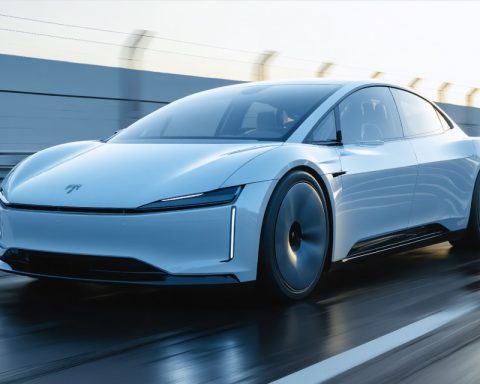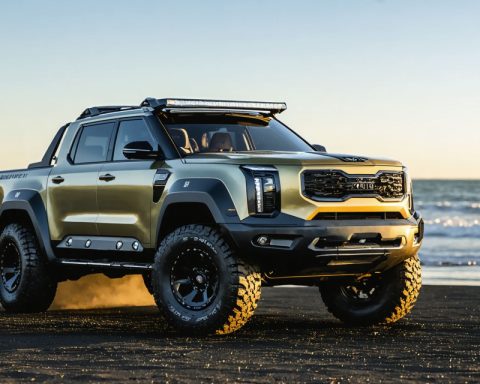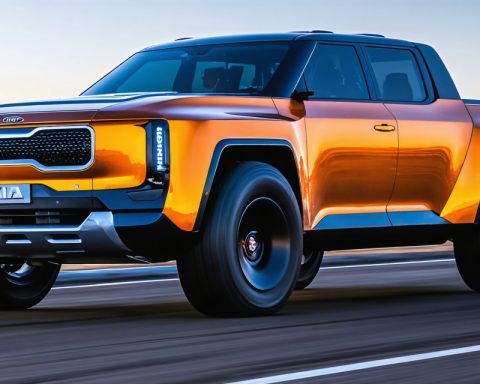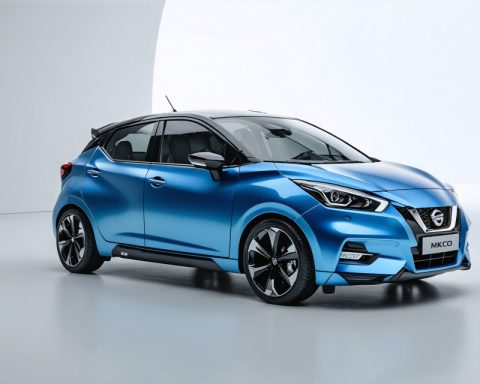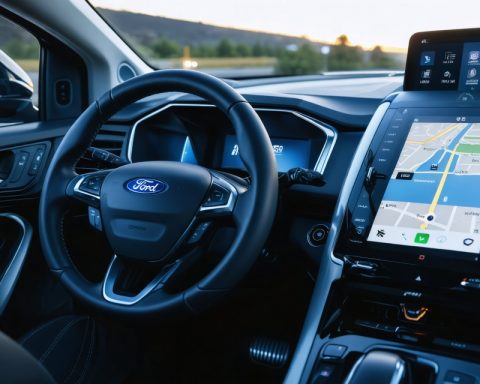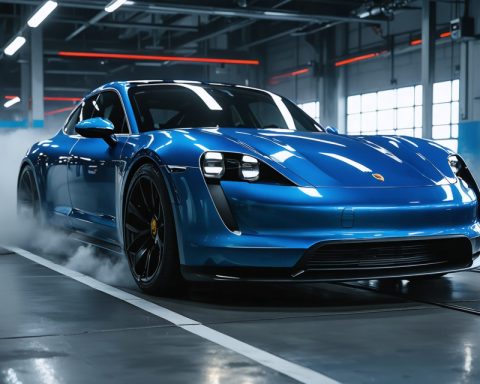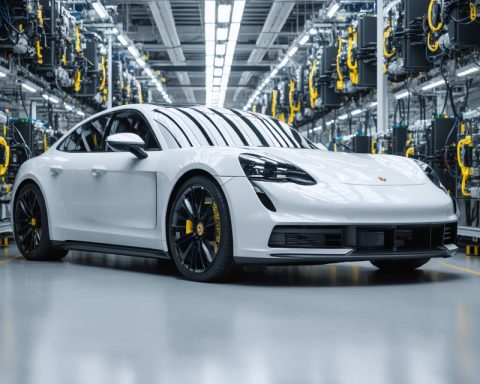- Norway is leading a revolution in environmental stewardship through the widespread adoption of electric vehicles (EVs), contributing to pristine air and reshaping its economy and society.
- The government supports the transition with incentives like tax breaks and an extensive network of charging stations, boosting EV ownership to over 80% of new car sales by 2022.
- Norway utilizes its abundant hydropower resources to sustain its EV infrastructure, making the initiative truly sustainable and environmentally friendly.
- EVs in Norway symbolize civic duty and technological progress, reflecting a shift in public perception and a move away from oil dependence.
- Norway’s approach offers a blueprint for other nations, illustrating the feasibility of an EV-driven future through strategic policy, innovation, and public engagement.
Norway’s rugged landscapes, dotted with fjords and majestic mountains, are witnessing a quiet revolution. This European nation, long celebrated for its natural beauty, has embraced a new kind of environmental stewardship: the widespread adoption of electric vehicles (EVs). The switch from fossil fuel-guzzling cars to sleek, silent EV models isn’t just keeping Norway’s air pristine; it’s reshaping the country’s economic and social tapestry.
In the heart of Oslo, EVs whiz by silently beneath the Arctic sun. The government has championed the electrification of transportation through robust incentives. These include generous tax breaks and the construction of charging stations that outnumber gas stations, ensuring that owning an EV is not just environmentally savvy but also economically wise. By 2022, more than 80% of new cars in Norway were plug-in electric vehicles, a statistic few other countries can boast.
Sustainable Energy, Realized
Norway’s commitment extends beyond mere ownership. The country uses its substantial hydropower resources to fuel charging networks, rendering the EV movement not only green but genuinely sustainable. Imagine plugging in your vehicle at midnight with energy generated from cascading waterfalls—an image as serene as it is revolutionary. This abundant renewable energy means each car fueled is another victory for the global fight against climate change.
A Driving Force for Change
The electrification journey has not just electrified cars; it has supercharged public perception. Norwegians now view EVs as more than vehicles; they are symbols of civic duty and technological progress. The country’s roads have become a stage, with EVs as the actors in an unfolding narrative of sustainability. Streets once clogged with exhaust fumes now echo with the soft hum of efficient motors.
Yet, Norway’s experience holds lessons for the world. While the incentives appear generous, they are, in fact, strategic investments in cleaner air, reduced noise pollution, and a healthier populace. This shift has reduced the country’s reliance on oil—a bold move for a nation historically tied to offshore drilling.
The Road Ahead
What Norway illustrates is a blueprint for other countries gazing toward a more sustainable horizon. The EV revolution isn’t just about cutting emissions; it’s about creating a culture that values progress over tradition and innovation over inertia. For the eager tourists who arrive, the sight of charger-filled highways and the ubiquity of EVs sends a clear message: the green revolution is not just possible; it is already here.
The takeaway for global onlookers is clear: with the right mix of policy, technology, and societal buy-in, an EV-driven future isn’t a far-off dream—it’s an opportunity within reach.
How Norway is Leading the Global EV Revolution: Insights and Strategies You Need to Know
Beyond the Fjords: Norway’s Electric Vehicle Strategy
Norway’s transformation into a hub for electric vehicles is not just a symbol of environmental progress—it is a comprehensive strategy impacting economics, culture, and technology. Here are several key insights and strategies that amplify the original narrative of Norway’s EV success story.
Key Facts and Industry Trends
Market Dominance and Growth: By the end of 2022, over 80% of new cars sold in Norway were plug-in electric vehicles. The growth is fueled by government incentives such as eliminating purchase taxes on EVs, reduced toll fees, and free ferry rides, making ownership financially attractive. These incentives are meticulously designed to transition drivers from internal combustion engines to electric vehicles seamlessly.
Charging Infrastructure: Norway has more charging stations than gas stations. This is a crucial factor for EV adoption, as range anxiety is a significant barrier in other markets. The Norwegian government has invested heavily in providing fast-charging stations alongside highway routes, ensuring convenience for long-distance travel.
Hydropower Utilization: Nearly 98% of Norway’s electricity is generated from hydropower, enabling a truly green charging network. This reliance on renewable energy contrasts sharply with countries where EVs still rely heavily on fossil-fuel-based grids.
How-To Steps & Life Hacks
– Switching to an EV: Consider the availability of charging stations and the incentives offered in your region. Research models that suit your needs, factoring in range, size, and costs.
– Optimizing Charging Times: To maximize energy efficiency, charge your EV during off-peak hours when electricity is cheaper and the grid is under less demand.
Real-World Use Cases
Norway’s comprehensive network of chargers and the population’s embrace of electric vehicles serve as a real-world example for other countries. Urban planners and governments can look to Norway’s model as they develop their strategies for sustainable transportation.
Market Forecasts and Global Impact
Europe’s EV Landscape: As a leader in EV adoption, Norway sets a precedent for other European nations. It’s anticipated that the EU will follow this green trajectory, potentially seeing over 30% of the car market consisting of EVs by 2030.
Global Industry Trends: The rapid adoption of EVs in Norway is forcing global car manufacturers to shift their production lines towards greener technologies, sparking global advancements in battery technology and charging efficiencies.
Reviews & Comparisons
EV Models in Norway: In Norway, the Tesla Model 3, Volkswagen ID.4, and Nissan Leaf are popular due to their efficiency, practicality, and cost-effectiveness. These models are frequently reviewed by Norwegian consumers for reliability in severe weather conditions, a critical consideration for EV adoption in northern climates.
Controversies and Limitations
Economic Challenges: Despite its success, some critics argue that Norway’s heavy reliance on incentives could strain public finances if adopted long-term. As EVs become mainstream, balancing incentives with tax revenue sustainability will be crucial.
Dependency on Oil: Transitioning away from a fossil fuel economy presents challenges. While the domestic market is going greener, Norway continues to be a significant oil exporter. The shift towards exports of green technology and energy could be a potential solution to this paradox.
Pros & Cons Overview
Pros:
– Extensive charging infrastructure diminishes range anxiety.
– Strong government incentives encourage rapid adoption.
– Dominance of clean energy supports sustainable EV charging.
Cons:
– Financial burden on public funds due to subsidies.
– Continued dependency on oil revenue complicates long-term sustainability.
Conclusion: Actionable Recommendations
To emulate Norway’s success:
– Governments should adopt a mix of tax incentives and infrastructure investments.
– Consumers should leverage available EV incentives and educate themselves on local charging networks.
– Automakers need to focus on advancing battery technology and reducing production costs to facilitate global adoption.
For more insights, visit Norway and explore Norway’s commitment to sustainability and innovative automotive solutions.


